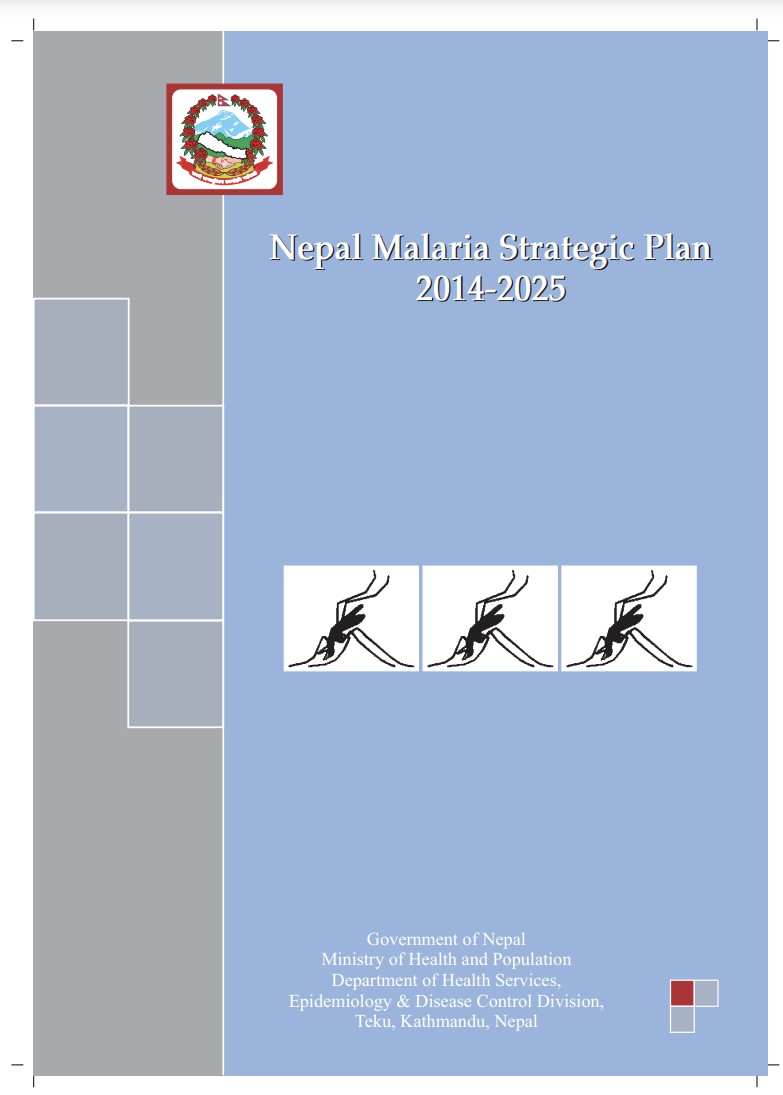National Malaria Strategic Plan (NMESP) of Nepal: 2014 – 2025
Countries: Nepal
Published: 15/07/2014
Nepal has arrived at a critical junction in its fight against malaria, as it has already achieved MDG goals sets for 2015, and the country is in a unique position to move towards eliminating the local indigenous transmission of malaria. The Ministry of Health and Population, with the continued support of its partners, is continuously implementing strong malaria control program, steadily improving the coverage and quality of indoor residual spraying, high coverage of long lasting insecticide-treated nets to prevent transmission in risk areas, and increasing access to early diagnosis of suspected malaria cases and institution of appropriate treatment.
The Ministry of Health and Population, through its National Malaria Control Program, has set ambitious vision of a malaria-free Nepal by 2026. Over the next 5 years (2014-2018), our priority will be to consolidate the gains achieved till date in reducing the malaria burden and sustain the downward trend in malaria morbidity and mortality and maintain outbreak free status. Recent Malaria Program reviews (Mid-term review of the National Malaria Program in June 2013, Program review 2010, and JANS 2011), by external experts with international experience and expertise with inputs and support of national experts has clearly mentioned in their report as “Nepal has surpassed the Millennium Development Goal #6 by cutting malaria morbidity and mortality rates by more than 50% in 2010 as compared to 2000. Despite the political instability and current restructuring of administrative set up towards increasing federalism, the country is in a favorable position to progressively eliminate the remaining active foci (wards) where malaria transmission remains of concern. The Ministry of Health and Population, with the support of its partners especially WHO which is coordinating the technical assistance, has implemented a strong malaria control program, steadily improving the coverage and quality of indoor residual spraying (IRS), introducing long lasting
insecticidetreated nets (ITNs), and increasing access to rapid malaria diagnosis (RDTs) and powerful artemisinin-based combination treatments (ACTs).” The report has also mentioned the need for a strong team at center and districts to intensify surveillance, improve the epidemiological information for timely containment of the possible transmission; Nepal has high receptivity and vulnerability for malaria
transmission so strengthening sensitive surveillance & monitoring system are major steps for the country to move towards elimination pathway.
In achieving elimination goal, in addition to surveillance and prevention, coordination and concerted effort with India particularly in tracking malaria in migrant workers have received specific focus in this strategy.



